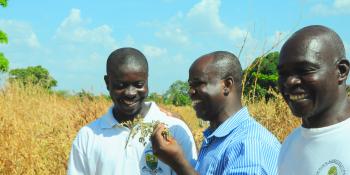Multiple cropping could help feed the world
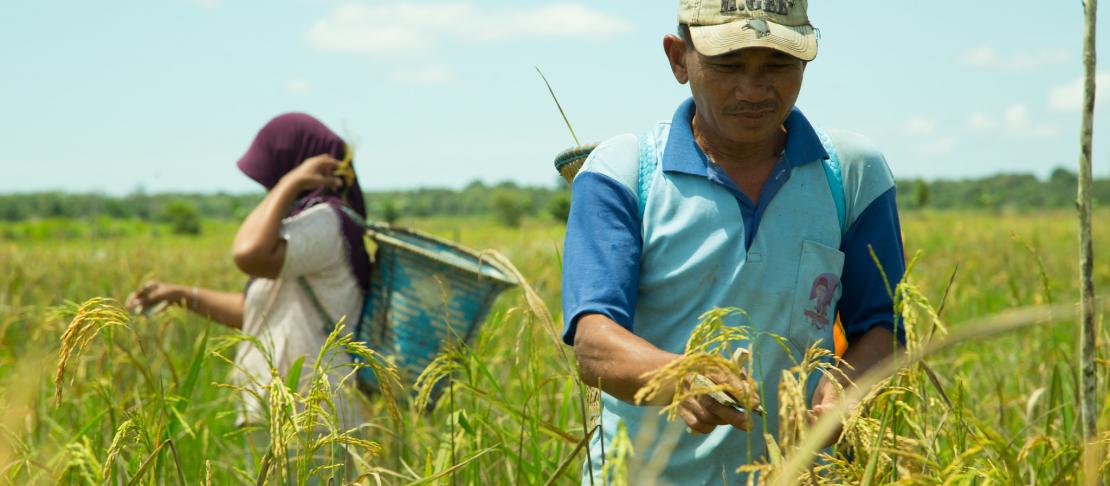
Global population and food demand are expected to increase considerably in the future. Solutions to feeding and nourishing the world's growing population include increasing access to food, reducing food waste, and producing more food while minimizing the negative impacts of food production on the environment.
A way to grow more food on the same piece of land is for farmers to practice multiple cropping, defined as growing multiple crops sequentially, within a year. Multiple cropping can increase production and income and has additional benefits—increased crop diversity, improved functioning of agricultural systems, spare land for biodiversity or other uses and reduced use of inorganic fertiliser and pesticides. However, it can also have disadvantages such as increased risk of crop failure and risk of environmental degradation.
This strategy is not new. Many farmers already practice multiple cropping, particularly in tropical and sub-tropical regions. However, many more farmers could intensify and diversify their farming practices by using multiple cropping to increase agricultural production. Until now, scientists have not been able to understand where different types of multiple cropping are practiced or quantify the land area of multiple cropping systems. Thus, they have not been able to properly account for it when modelling global food production, land use change and effects of multiple cropping on a range of factors including ground coverage and water fluxes.
Multiple cropping systems could increase global cropping intensity from CSIRO on Vimeo.
Better accounting of multiple cropping systems globally can help scientists understand the extent to which the suggested intensification on current cropland for increasing crop production can be sustainable. To address this lack of data, a new study led by the Commonwealth Scientific and Industrial Research Organisation (CSIRO) mapped multiple cropping systems globally and estimated the multiple cropping area for the time period 1998-2002. The study also estimated the potential to increase multiple cropping.
Novel findings
Our study found that 134 million hectares of land are under multiple cropping, which is 12% of global cropland. Multiple cropping mostly occurs in tropical and subtropical climates with a rainy season long enough or adequate irrigation to grow two or three crops in a sequence during a year.”
Katharina Waha, lead author and Research Scientist with CSIRO in Australia
The study found that the majority of multiple cropping areas are located in East Asia and South Asia, and in low to lower middle-income countries. Multiple cropping systems in South Asia are mostly based on rice, with other crops grown after the rice has been harvested. Multiple cropping systems in Africa are based on maize, wheat, millet or sorghum. Only 5% of global rainfed cropland is under multiple cropping, whereas 40% of global irrigated cropland is under multiple cropping.
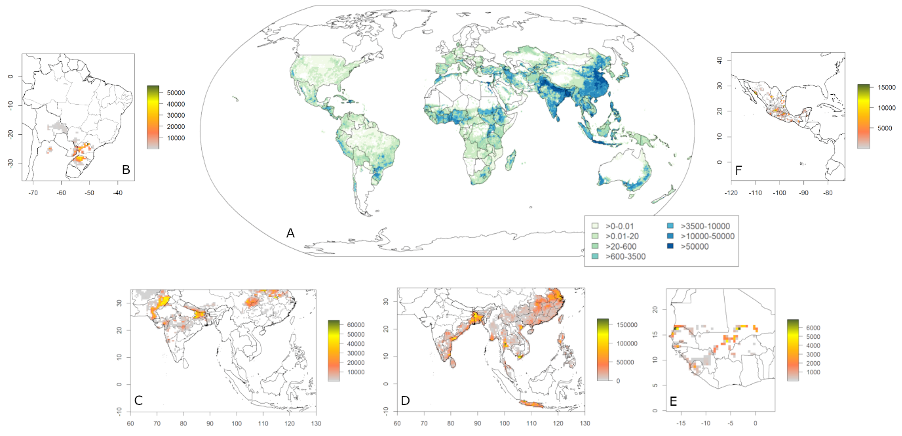
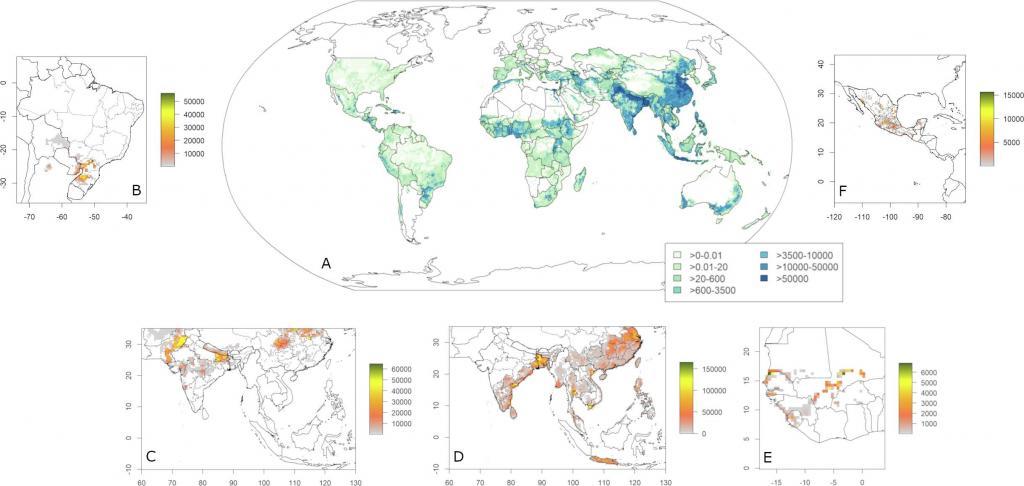 Figure 1. Physical area (hectare) of multiple cropping systems per 30 arc-min grid cell, 1998-2002. Click to enlarge.
Figure 1. Physical area (hectare) of multiple cropping systems per 30 arc-min grid cell, 1998-2002. Click to enlarge.
Increasing multiple cropping is an important strategy for increasing harvested area and crop production without expanding physical cropland. The scientists' approach found that a maximum of 395 million hectares (~40 %) of global single crop area in 2000 was potentially available for this type of intensification. The additional total crop area for intensification is largest in South America and lowest in Oceania. The authors' estimate is considerably less than previous estimates by other studies.
This is the first time that multiple cropping systems have been mapped on a global scale, with the crop-specific and area representation that is needed for global assessments of land use and food production. This study goes beyond previous work in that it describes multiple cropping systems in terms of the cropping sequence, growing season and physical area of each systems and not just the average cropping intensity.
Implications for food security and the environment
The study found that increasing multiple cropping in suitable areas could increase global harvested areas of currently 1.29 billion hectares by 87-395 million hectares. Many low- and middle-income countries in Africa, South America and Asia have potential for increasing multiple cropping which could support food supply and food security.
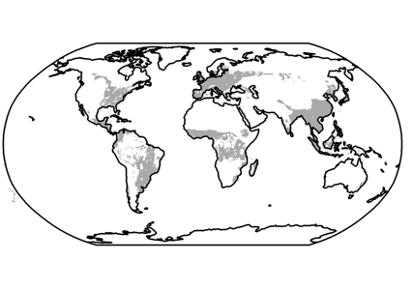  | 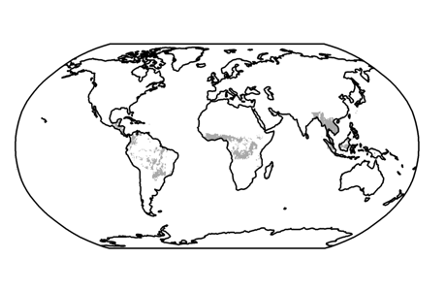  |
Figure 2. Areas with potential for increasing cropping intensity in a scenario with maximum 395 million hectares globally (left) and a minimum 87 million hectares (right). The differences are due to different assumption on the length of the growing period of an additional crop and the climate risks potentially reducing the area to grow additional crops.
"While this means that farmers could grow a lot more food and more regions can be food secure by practicing multiple cropping, our estimate of maximum 30% increase in global production are much lower than the previous estimates," said Stefan Siebert, Professor of Agronomy at the University of Göttingen. "This means that while multiple cropping is an important strategy to increase production of food and food security, it might contribute less to future global food production than we previously thought. We certainly need to consider other options to sustainably feed the world’s population."
Some forms of multiple cropping can be beneficial for the environment, but others can be harmful. If multiple cropping is able to increase production on existing land, then land can be spared for biodiversity elsewhere. This is of great benefit for the environment. However, the economic benefit from increased production from multiple cropping can also lead farmers to expand their current cropland with negative outcomes for biodiversity. Furthermore, more intense farming can use additional resources that can have negative impacts on the environment. The environmental consequences of introducing a second crop on currently single cropping land depend on the type of crop, management and the local context.
Thus, multiple cropping is a useful strategy to help to feed the world’s growing global population more sustainably. However, careful consideration of the benefits and disadvantages of multiple cropping at local scales is needed prior to adoption.
Read more:
- Journal article: Multiple cropping systems of the world and the potential for increasing cropping intensity
- Esri storyMap: Multiple cropping can help feed the world

